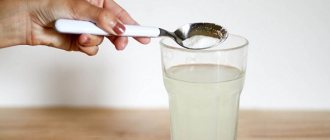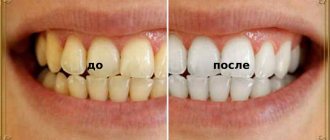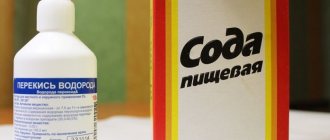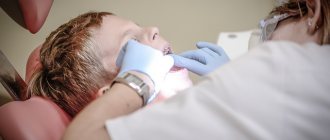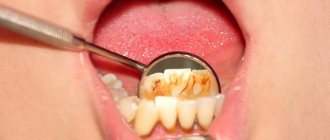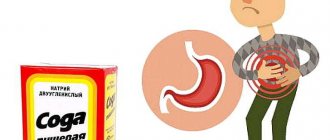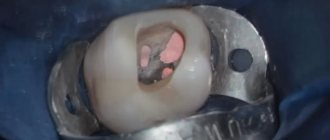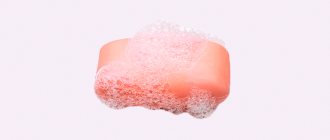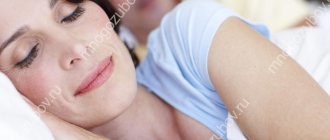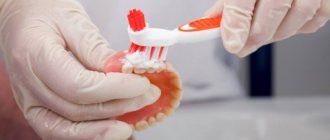White items require special care. Both clothing and home textiles made in white are especially vulnerable to stains. There are a sufficient number of ready-made products for white fabrics on sale, but there are times when they turn out to be ineffective or prohibitively expensive. For such situations, there are time-tested home recipes. The leading position is occupied by bleaching clothes with hydrogen peroxide with the addition of soda and other simple ingredients.
Principles of whitening with soda and peroxide
Before you bleach white things at home with soda and peroxide, you need to choose the appropriate option from more than ten recipes for different fabrics and their contaminants. Hydrogen peroxide (the ancestor of oxygen-based anti-pollution products) copes with the task adequately and, unlike many store-bought products, it does not harm the fibers.
Note! You can use the products on “fresh” clothes that are not stretched, worn out, or damaged by aggressive chemical compounds.
The whitening duo is suitable for many types of fabrics, including:
- linen;
- denim and cotton;
- synthetics;
- natural silk;
- wool and cashmere.
The solution is suitable for treating any clothing, home textiles, bedding and underwear, as it does not cause allergies or irritation to the skin. The product will help make things snow-white, eliminating yellowness, grayness, stains and faded areas.
General information
Do not confuse hydrogen peroxide solution with regular hydrogen peroxide, which can be harmful. 3% hydrogen peroxide should never be taken. Can be diluted in water.
Many sources talk about the benefits and positive aspects after taking it, while keeping silent about possible risks and dangers.
Hydrogen peroxide exists in 2 forms - liquid and tablet form.
- Perhydrol (3% peroxide in liquid form);
- Hydroperite (35% peroxide in tablet form).
1 tablet contains 1 tbsp. l. liquid solution.
Due to its liquid form, perhydryl is widespread and easy to use in medicine. Hydroperite is usually used independently at home.
How to strengthen soda and peroxide
You can bleach things using peroxide, sodium bicarbonate and their mixture in pure form, or in combination with additional ingredients. They will help enhance the effect and remove more complex contaminants. Popular additives and their effects on fabric:
- salt is suitable for synthetic and natural animal fabrics (wool and silk). Helps to delicately cope with the problem of restoring whiteness;
- ammonia is suitable for all natural fabrics, eliminates unpleasant odors, enhances the effect of the basic solution;
- mustard powder is also universal in use and can be added to mixtures to whiten any items;
- Potassium permanganate can gently wash any white item.
Fact! Mixing store-bought products with homemade formulations can have the opposite effect, leading to yellowing of the material and damage to things.
Why do you need to boil laundry?
By boiling you can not only achieve whiteness, this method allows you to get rid of stains. Boiling water helps to disinfect things and cope with many infections. For example, when boiling they die:
- influenza viruses - almost instantly;
- pathogens of hepatitis B and C – in an hour;
- anthrax bacilli and even spores - in an hour;
- spore-forming tetanus bacillus and spores – after 3 hours;
- Staphylococcus aureus, which causes mastitis and severe illness in infants - almost instantly;
- fungi that cause fungal diseases.
Note! Not all pathogens are killed at 100°C, but this method can cope with a wide range of infections. Machine washing at 90°C is not a substitute for boiling, as lower temperatures are lethal to fewer bacteria.
It is useful to treat underwear in this way after a stay in the hospital or maternity hospital. It is recommended to disinfect towels by boiling after visiting a public bath, swimming pool or beach. This method is also good if there is an allergy sufferer in the family who cannot stand the smell of washing powder, because you can boil laundry with soda or laundry soap.
By boiling laundry, you can destroy clothing lice and their larvae - nits. This turns out to be relevant after the child’s stay in the camp where such a problem arose. It will destroy boiling water and dust mites, which thrive in house dust and bedding, causing inflammatory diseases of the skin and eyes.
The disadvantage of boiling is that only products made from natural fibers can be subjected to it. Synthetic fabrics will lose their original structure and become unsuitable for use. Some things made from natural raw materials are also at risk. These include clothing and bedspreads made of wool. An inadvertently boiled sweater can shrink by several sizes or even turn into something like a felt boot.
Important! It is not recommended to test new and good colored items with boiling water. Dyes often do not withstand temperature conditions, the item fades or becomes faded.
However, boiling laundry is useful if a child or adult cannot tolerate washing powders. Allergy sufferers are advised to wear items made from natural fabrics, and many of them can be washed well and bleached by boiling.
How to use baking soda and peroxide
Bleaching white clothes with hydrogen peroxide and soda has its own rules. Despite the fact that the products are considered universal and suitable for all things, there are subtleties in their use on different fabrics.
Linen and cotton
These are the most unpretentious materials that can withstand even the aggressive effects of bleaches and high temperatures. There are several recipes for them:
- Pure peroxide. Already washed items are soaked in warm water with the addition of hydrogen peroxide (at the rate of one teaspoon per two liters), left for 20 minutes, and rinsed with clean water.
- Boiling with powder. This recipe is applicable exclusively to cotton. Helps get rid of difficult stains, popular among lovers of white kitchen textiles. The products must first be kept in a warm soda solution (at the rate of one teaspoon per liter of water), then boiled in an enamel bowl with washing powder. Cooking should last half an hour, accompanied by regular stirring and turning of the tissues.
- Products to combat sweat marks. Here the recipes for linen and cotton are different. Linen is washed in a machine with soda ash at a temperature of 70 degrees, then the washing is repeated with traditional means. Cotton is processed locally: peroxide is applied to the stains, left for up to five minutes, then the clothes are rinsed in cool water. Sometimes the procedure has to be repeated.
There are several tricks to working with linen and cotton. When using soda ash, do not add any more washing or bleaching products to the machine. Purchase special tongs for turning boiling laundry. Turn the cloth soaked in peroxide every five minutes.
Linen and cotton fabrics are refreshed without adding any additional ingredients.
White synthetic
Caution is required when working with artificial materials. Washing should not be done at temperatures above 40 degrees, and sodium bicarbonate and peroxide should not be used in concentrated form; more gentle solutions are needed. Compositions for whitening synthetic items at home with the addition of soda and peroxide:
- Soda-ammonia composition. At low temperatures, ammonia will help enhance the effect of soda. Synthetics need to be soaked for three hours in water diluted with soda (one tablespoon per liter) and ammonia solution (tablespoon per five liters). Afterwards, the items are rinsed and then washed in the usual way.
- Peroxide dissolved in water. This recipe will help remove rust from tap water. You need to soak the synthetics for two hours in a mixture of ten liters of water and 200–250 milliliters of peroxide. Afterwards, it is better to rinse the item and wash it by hand, do not twist it, and dry it at room temperature (never in the sun).
- Peroxide with soda is an alternative option for whitening at low temperatures. Add 30 ml of peroxide and two tablespoons of soda ash to a bucket of water. Soaking time before washing is no more than half an hour.
Fact! Resuscitation of white synthetics damaged by improper washing is almost impossible. If the item has become faded or pellets have appeared on it, it will not be possible to restore its original neat appearance.
Wool and silk
Animal fabrics are particularly sensitive to bleaches, so extra precautions are required when working with them. The peroxide solution should not be stronger than two percent, only baking soda is used, and the water temperature should not exceed 40 degrees. In addition, after completion of processing and washing, items must be rinsed again with the addition of table vinegar.
Bleaching, washing and rinsing wool and silk products should be carried out in water of the same temperature, then the textiles will not shrink.
There are delicate recipes for bleaching natural animal fabrics:
- In five liters of water you need to dilute a tablespoon of detergent for delicate washing, four times as much salt, a spoonful of peroxide and ammonia solution. Things need to be soaked in the solution for two hours, then rinsed first in clean, then in acidified water. Finally, wash gently and dry at room temperature.
- The cleanliness of white wool can be maintained for a long time by immersing items in an aqueous solution of baking soda for a quarter of an hour before each wash. To prepare a prophylactic agent, ten grams of soda powder are added to each liter of warm water.
- Bleaching of animal tissues can be done in a cool aqueous solution of weak peroxide. The pharmaceutical drug is diluted with water in a ratio of one to eight. The soaking period should be between five and ten hours. Afterwards, the textiles are removed from the container and dried at room temperature without additional washing.
Precautions when working with the substance
There are certain precautions when working with peroxide to avoid tissue damage:
- The soda mixture with peroxide is applied to the fabric for no more than 5 minutes.
- Do not soak delicate materials in hot water with peroxide.
- To enhance whitening, do not add commercial bleaches.
- Do not remove rust stains with peroxide to avoid ruining your clothes.
- Use only 3% product, 10% concentrate and higher - cause skin corrosion. In case of contact with skin, rinse immediately with plenty of water. If swelling and hyperemia persist, you should consult a doctor.
- Avoid splashing peroxide on mucous membranes, mouth and eyes to avoid chemical burns.
- Wash with rubber gloves in a ventilated area.
By following these recommendations, you will avoid unpleasant consequences of work. To avoid spoiling the material, try the folk remedy on a small area.
The article has been verified by the editors
How to wash faded items
Before you bleach your laundry with soda and peroxide when other things have stained it, you need to learn the basic rule: you need to get rid of dirt as quickly as possible. The first remedy is repeated washing with the addition of a double portion of a special detergent for washing whites, strengthened with soda ash (in a ratio of ten to one). If this method did not help or the color damage was not detected immediately, there are more radical methods:
We recommend:
How to bleach white woolen items
- Cotton linen can be boiled with the addition of hydrogen peroxide and ammonia. For a bucket of water you need a glass of hydrogen solution and 15 milliliters of ammonia, the boiling time should be up to half an hour;
- You can try to revive linen, denim, thick cotton with the help of soda paste. The water-soda slurry is applied to the stains locally, left for 20 minutes, after which the entire item is sent for washing;
- synthetic fabrics can be saved with soapy water. To do this, dissolve a crushed piece of laundry soap in half a liter of water, add two tablespoons of peroxide and five ammonia. The finished mixture is poured into a bucket of warm water, where the faded synthetics are soaked for half an hour before washing.
Note! None of the given recipes are guaranteed to work. The item may not be washed to its original snow-white state. In this case, the only way is to dye the clothes a different color using ready-made dyes.
Why is boiling necessary?
Processing fabrics at high temperatures removes stubborn stains, deeply ingrained dirt, and restores the lost whiteness to dull and washed-out items. This process is carried out not only for bleaching, but also for disinfection, since hot water paired with detergents can kill most existing pathogens. Using this simple and affordable method, you can destroy bacteria, some viruses, fungus and mold, whiten stains of dirt, urine, feces, blood, saliva, traces of food and drinks. Temperature exposure also destroys allergens.
How to prepare a universal solution
There are universal solutions based on soda and hydrogen peroxide, applicable in all cases of life. List of recipes and recommendations for their use:
- A soda-ammonia solution will help comprehensively refresh things. To do this, you need to dilute five tablespoons of baking soda and two tablespoons of ammonia solution in five liters of water, soak the laundry in the solution for four hours, then wash or rinse in cool water. We must not forget that frequent washing can cause a gray coating to appear on fabrics, so sometimes it is enough to limit yourself to rinsing.
- Soda paste can remove yellow stains and sweat stains. The food powder is diluted with water to a paste consistency, which is rubbed into the yellow areas with your hands and left for half an hour. Afterwards, you need to remove the remaining soda from the stains and wash the items using powder.
- Colored items with white collars and cuffs have their own trick. Soda paste, made according to the recipe from the previous paragraph, is strengthened with a few drops of ammonia, rubbed over the entire area of the white finish, and after an hour the item is rinsed in clean water. You should not overuse this product so as not to thin the material.
Currently, even with the abundance of bleaching and washing products on the shelves, many housewives use recipes based on soda and peroxide. They have undeniable advantages over store-bought formulations:
- Safety - homemade mixtures do not cause allergies and are non-toxic, so they can be used even for infant items. Allergy sufferers are also recommended to use natural solutions for washing so as not to provoke an attack by chemical compounds included in commercial powders and liquid bleaches.
- Variability - you can prepare a composition for any fabric and situation. Sodium bicarbonate and peroxide allow you to remove fresh stains, prevent the loss of white color in clothes, comprehensively restore whiteness, and fight stains from sweat and unpleasant odors of laundry.
- Cost-effective – the cost of homemade formulations is several times less than that of ready-made ones. The ingredients are easy to buy in grocery stores and pharmacies, easy to store, and easy to mix.
As a result, housewives always have a whitening kit at hand for all occasions.
Get rid of bad breath.
Can't get rid of bad breath even after brushing your teeth? An excellent alternative for mouth rinsing is hydrogen peroxide. Since hydrogen peroxide kills bacteria that cause bad breath, all it takes is rinsing your mouth for 30 seconds. You'll be surprised how effective this is. But again, don't overdo it, and use a peroxide rinse once a week, as peroxide kills the good bacteria in your mouth too.
Hydrogen peroxide
Peroxide is a powerful oxidizing agent and solvent. It does a good job of removing greasy marks and yellowing on textiles, including old ones. Just wet the trail and forget about the towel for a few hours.
Top 8 most effective and safe dishwashing detergentsHow to remove unpleasant odor from the refrigerator and freezer: quickly eliminate the causes and consequences
How to turn on the refrigerator after defrosting: instructions on how to properly connect the device to the network after defrosting
By the way, peroxide has a “big brother” - a cosmetic hair oxidizer. You need to work with it more carefully, but the efficiency is also higher.
Important, the oxidizing agent is EXCLUSIVELY suitable for light-colored towels. On colored people it will leave noticeable white spots.
Zelenka
Brilliant green is a good dye that can be used to hide faded yellowness. To do this, wash the towel in the washing machine as usual, and then prepare the bleaching medium:
- Dissolve 5-8 drops of brilliant green in 4 liters of water.
- Submerge the towel there for 90 minutes.
- Wash it in the washing machine again.
The yellowness will be replaced by white with a barely noticeable green tint. By the way, bluing works the same way.
